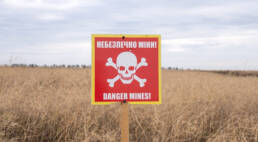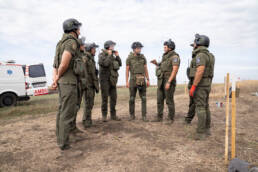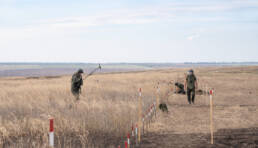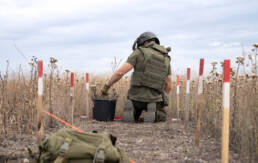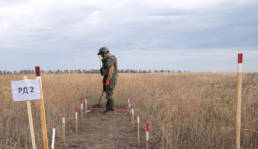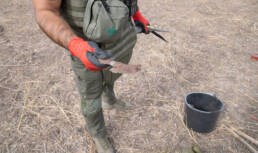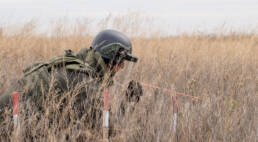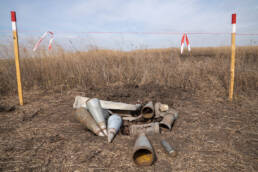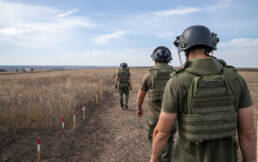Kharkiv Oblast, Ukraine – September 19, 2025:
In Kharkiv oblast, farmer Andrii Voronkin turned devastation into purpose. Russia’s 2022 invasion destroyed 150 million hryvnia in equipment from his agricultural enterprise and left 15,000 hectares of his farmland mined. After liberation, Andrii founded Humanitarian Security, assembling and supporting a team of former farmers who trained as deminers and cleared 9,000 hectares of his land. Under his leadership, the organization has grown to 30 certified specialists who now work in de-occupied towns and villages across eastern Ukraine. Their training, completed in Kamianets-Podilskyi, equips them to operate safely in some of the most dangerous terrain of the war.
In the following photos, sappers from Humanitarian Security remove landmines left by Russian forces during the full-scale invasion. Vast stretches of farmland, forests, and villages remain contaminated, making Ukraine one of the most heavily mined countries in the world. Each clearance operation not only prevents future casualties but also restores access to homes, fields, and livelihoods for communities trying to rebuild their lives.
One of the biggest challenges in mine clearance is the high number of false signals from metal detectors. As many as 90% of alerts are caused not by landmines, but by harmless fragments—nails, shrapnel, or scraps of metal. Each signal must still be carefully probed by hand to confirm whether a mine is present, slowing the work considerably.
After a detector signals a possible mine, the sapper marks the spot and begins probing with a thin rod held at a 30–45° angle. This angle is vital—pressing straight down could trigger a buried pressure plate. Advancing only millimeters at a time, he feels for changes in resistance that might reveal metal or casing. If it’s just scrap—like nails or shrapnel—it’s removed as a false positive. If it appears to be a mine, the site is marked and the mine is removed or neutralized. Every signal is treated as deadly until proven otherwise.
Ukraine faces millions of hidden mines and explosives—a threat that could take decades to clear by hand. Groups like Humanitarian Security and other demining teams are on the front lines, doing the painstaking work to make farmland safe and villages livable again. Emerging technology—drones, robotics, and advanced sensors—offers hope of reducing false positives and speeding up detection. While new tools may one day multiply their efforts, it is the determination of these sappers today that is carving the first safe paths toward Ukraine’s recovery.

